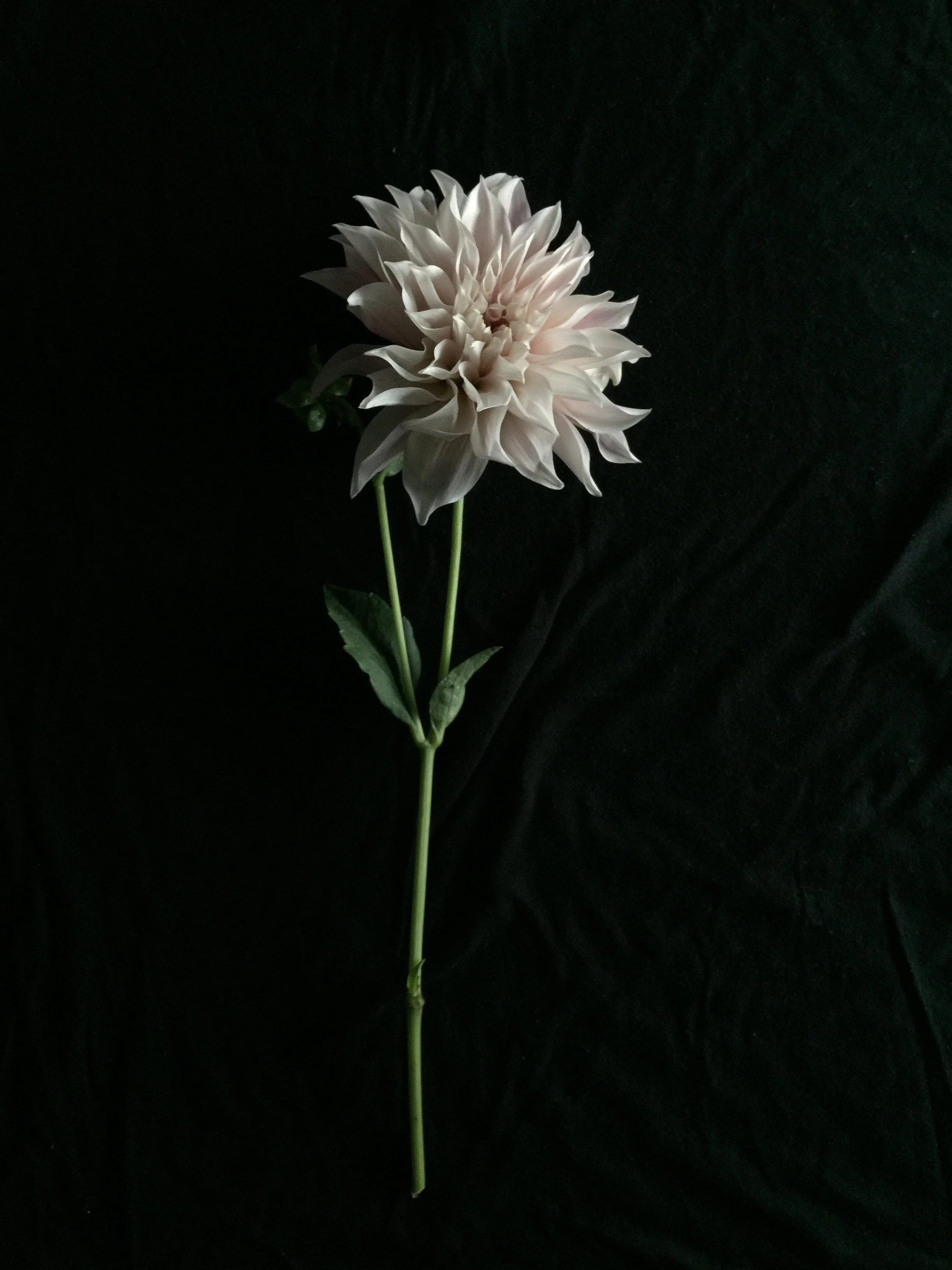The Gardener's Friend — On Dahlias
You are a recipient of Coucou Postale, a postcard series designed to engage and delight readers through stories and art using good old fashioned mail and the magic of the Internet.
Dahlia ‘Café au Lait’ — Newport, Rhode Island, 2015
Everyone remembers their first dahlia. Mine was a Café au Lait at a farmer’s market in Newport, Rhode Island. Only a month later, I would notice them adorning decorations for Dias de Los Muertos, the Mexican holiday that honors the dead, which is where their story begins.
Before Mexico adopted the dahlia as its national flower, they were part of an Aztec myth:
The Earth Goddess Serpent Woman was ordered by the sky gods to impale a flower of Dahlia coccinea on the sharp point of a maguey leaf [agave plant] and to hold both to her heart all night. The next morning she gave birth to Uizilopochti[;] he was god, fully grown, fully armed, and with a thirst for blood from the flowers’ eight blood-red rays.
According to Spanish naturalist and court physician, Francisco Hernández, who was the first to record them in 1570, the Aztecs grew dahlias for animal food and medicine. Its medicinal use was included in the Badianus Manuscript, which was produced in 1552, making it the oldest American herbal. Like Paracelsus’s concept of the doctrine of signature, the Aztecs believed that the dahlia, whose stem resembled a water-pipe, could be used to treat the common “water-pipe” problems of humans.
By the time the dahlia reached London, hundreds of years later, they were primarily used for food since their tubers were similar to potatoes. It wasn’t even until the 1800s that Europeans began cultivating them into the flowers we know today. Plant lore credits Napoleon Bonaparte’s wife and flower-obsessive, Empress Joséphine, for a dahlia craze that consumed Europe’s gardeners. It all began when she hired Aime Bonpland, a plant collector who brought dahlia tubers or seeds from the New World, to run her gardens. Despite the garden being a bust — Bonpland left no record of developing any dahlias for her — the plant's intrigue grew in popularity and size.
Today, dahlias, some of which are the size of dinner plates, continue to enchant people, adding a particular old-fashioned charm to gardens and flower arrangements. It’s no wonder the craze for them continues. — GF

